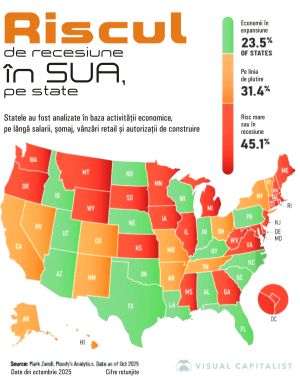Plastic pollution has reached unprecedented levels. Four global policies could eliminate almost all plastic pollution on Earth, according to a study conducted with the help of artificial intelligence (AI) by researchers at the University of California, Santa Barbara. According to the study published in the journal Science, the four policies are as follows: investment in waste management infrastructure, a cap on new plastic production at 2020, financial measures such as a modest tax on packaging and the obligation for all new products to contain at least 40% recycled plastic. They "are by no means a panacea for solving the huge problem of plastic pollution," said Neil Nathan, a researcher at the University of California, Santa Barbara. But if applied simultaneously, these measures would reduce by 91%, to 11 million tonnes, the amount of "mismanaged" plastic waste each year by 2050, compared to the 121 million tonnes that would be generated in the same year if nothing were done.
• Waste Mismanagement
"Mismanaged waste is everything that is not incinerated, landfilled or recycled, so that fraction that is much more likely to end up in our environment and have an impact on our rivers and oceans," explained Neil Nathan. If no action is taken, the cumulative amount of "mismanaged" waste between 2011 and 2050 would be 3.5 billion tonnes, enough to "cover Manhattan Island with a layer of plastic ten times higher than the Empire State Building," the American researcher pointed out. The study was published as delegates from 178 countries met in Busan, South Korea, on Monday to try to reach an agreement by Dec. 1 on a global treaty to combat plastic pollution. After two years of negotiations, countries around the world remain divided on the methods that should be used. Some want a drastic treaty that would limit production, while others, mainly major oil producers such as Saudi Arabia and Russia, are pushing for more modest targets focused on recycling and waste management. The new study, titled "Pathways to Reducing Global Plastic Waste and Greenhouse Gas Emissions by 2050," used interactive software to simulate the effects of measures that could be included in the future Busan treaty. The four policies promoted in the study are the measures "that appear to have the greatest impact or are most cost-effective," Neil Nathan added. The software used machine learning to combine information about population growth and economic trends to predict the future of plastic production, pollution and trade.
Douglas MacCauley, another professor at the University of California, Santa Barbara, believes that one of the most exciting findings of this study is that plastic pollution can practically be put to an end thanks to this treaty.
The fifth and final round of negotiations for a global treaty against plastic pollution opened earlier this week in Busan, South Korea, but divergences among the 178 participating countries manifested themselves almost immediately, shortly after the chaotic end of the UN Climate Change Conference (COP29), which recently took place in the Azerbaijani capital, Baku. "This conference is more than just drafting an international treaty. It is humanity itself mobilizing in the face of an existential threat," said Luis Vayas Valdivieso, the Ecuadorian diplomat chairing the debate, at the opening of the session. He reminded delegates that they would have "63 hours of work" to reach an agreement on the thorny issues of the negotiations, such as caps on plastic production and a possible ban on toxic chemicals.
Plastic pollution is ubiquitous. Microplastic particles are found in all the food people eat, in virtually every organ in the human body, including the brain and breast milk, and inside clouds.
In 2019, humanity produced an estimated 460 million tons of plastic, a quantity that has doubled since 2000, according to the Organization for Economic Cooperation and Development (OECD). And this amount is likely to double again by 2040. Over 90% of plastic is never recycled and over 20 million tons end up in nature every year, often after just a few minutes. ute of use. Plastic, a product made from fossil fuels, also accounts for 3% of global carbon emissions. But while everyone has agreed to recognize the seriousness of the problem, opinions differ radically on how to combat plastic pollution. Two camps are facing off in the Busan negotiations. First, there is the "High Ambition Coalition" (HAC), which brings together many African, European and Asian countries. These countries want a treaty that covers the entire "life cycle" of plastics, from production to waste. The HAC advocates for binding targets for reducing production and waste, as well as for imposing changes in the design of plastic products to facilitate their reuse. The opposing camp, composed mainly of major oil producers such as Russia, Iran and Saudi Arabia, advocates for a less restrictive treaty that would only address recycling and waste management, without addressing production. Because of these divisions, the first four rounds of negotiations resulted in a draft treaty of more than 70 pages with cryptic wording and provisions that were unanimously considered unenforceable. To break the deadlock, Luis Vayas Valdivieso drafted an alternative draft, written in 17 pages and emphasizing consensus issues, such as the need to promote reusable plastics. The chairman of the negotiations scored an initial victory on Monday when he secured the Busan negotiations to be held on the basis of his simplified "document." Initially opposed to this possibility, Russia, Saudi Arabia and Iran eventually gave in. Some observers predict that the negotiations will go into overtime in Busan, as happened at the difficult UN conferences on climate change and biodiversity in recent weeks. "After the failure of two consecutive nature and climate summits, the Busan session must be a refuge against the lack of action on nature and climate," WWF said. Luis Vayas Valdivieso wants an agreement to be signed at all costs in Busan. This worries some NGOs, who fear that countries will only agree on a "timid" treaty, only to sign something on December 1. The positions of the United States and China, which have so far not openly supported either camp, will prove crucial.






























































